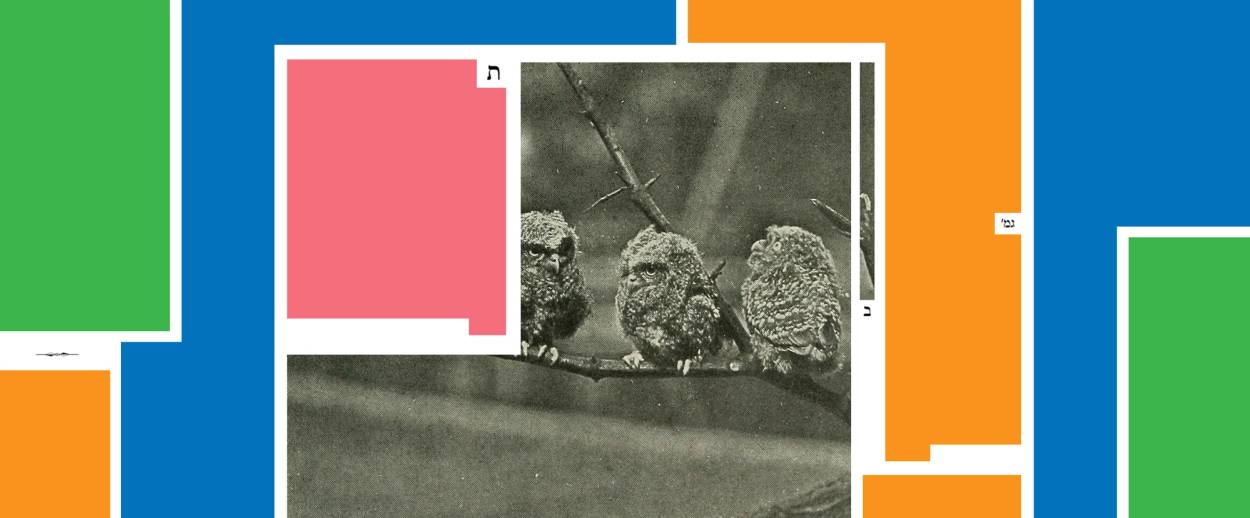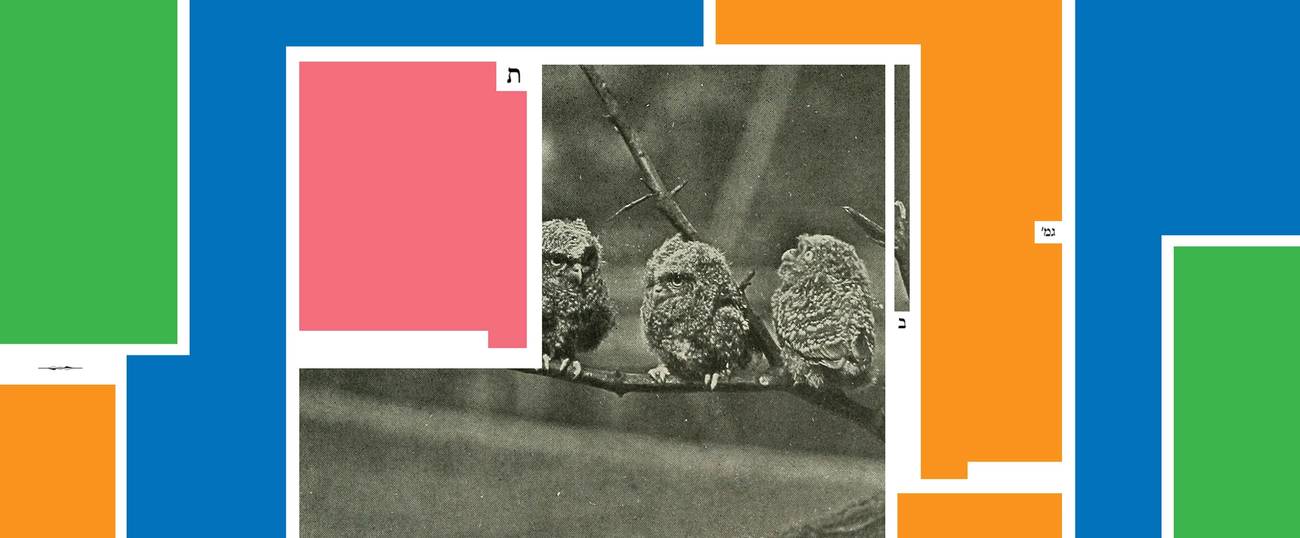Law v. Lore
In this week’s ‘Daf Yomi,’ competing strands of legal wrangling and storytelling in the ancient compendium of Jewish thought




Literary critic Adam Kirsch is reading a page of Talmud a day, along with Jews around the world.
Which is greater, halakha or aggadah, law or lore? Over the four years I have been reading Daf Yomi, my feelings about these two basic elements of the Talmud have evolved. At first, as I struggled to understand the rigorous and logically complex analyses of halakha, I would long for an oasis of aggadah to relieve the tension. Later, however, I came to mistrust this instinct of mine, partly because the popular Jewish image of the Talmud overemphasizes aggadah at the expense of halakha. If a story or striking phrase is quoted in a rabbinical sermon or a secular text, it is almost always aggadah: stories like the one about Hillel teaching the Torah while standing on one foot, or the one about the rabbis outvoting a voice from Heaven. This is natural enough—aggadic stories are much pithier and more striking than halakhic argumentation. But reading the Talmud showed me that aggadah is actually a pretty small percentage of the text. Studying Talmud has much more to do with analyzing laws than with meditating on stories.
Perhaps the ideal, however, is to value both strands of the Talmud equally. If aggadah exercises the right brain, home of intuition and imagination, halakha makes heavy demands on the left brain, home of calculation and reasoning; and just as the brain requires both hemispheres to function, so the Talmud requires aggadah and halakha to communicate its truths. This was the message of a striking story in this week’s Daf Yomi reading, which comprised Chapter Six of Tractate Bava Kamma. It once happened that Rav Ami and Rav Asi sat before Rabbi Yitzhak Nappacha: “One Sage said, Let the Master say words of halakha, and the other Sage said, Let the Master say words of aggada.” Whichever Yitzhak tried to say, one of his pupils would protest.
Finally he said: “I will relate a parable. To what can this be compared? To a man who has two wives, one young and one old. The young wife pulls out his white hairs, so that her husband will appear younger. The old wife pulls out his black hairs, so that he will appear older. And it turns out that he is bald from here and from there.” Just as a head needs white and black hairs to be covered, so the Talmud needs both halakha and aggadah; to resist either type of reasoning only leaves you bald. (It is ironic, though, that it took an aggadic parable to make the point.)
Sometimes, indeed, what looks like aggadah turns out to really be halakha in disguise. This is what happens in Bava Kamma 60b, when the rabbis turn their attention to a story from the Book of Samuel. We have seen several times before that the rabbis love to reinterpret the figure of David, so that the biblical warrior and lover becomes a proto-rabbi, more concerned with Torah than with conquest. This time, the rabbis cite a verse that comes from a description of a pitched battle with the Philistines: “And David longed, and said: Oh, that one would give me water to drink of the well of Bethlehem, which is by the gate! And three mighty men broke through the host of the Philistines, and drew water out of the well of Bethlehem, that was by the gate, and took it, and brought it to David, but he would not drink it, but poured it out to the Lord.”
Studying Talmud has much more to do with analyzing laws than with meditating on stories.
The first half of this story could have come from any warrior epic—one might imagine Achilles or King Arthur similarly calling for water in the middle of battle, and his doughty warriors performing an act of heroism to get it for him. The second part, where David pours the water out as a sacrifice to God rather than drink it, seems to mark it as a specifically Jewish legend: Even in extremis, David puts God’s honor before his own needs. But as the rabbis read it, the entire episode has nothing to do with war at all. It is, rather, a parable about Torah study. As the Koren Talmud explains, “The Sages understood that David was not simply asking for water, but was using the term as a metaphor referring to Torah, and he was raising a halakhic dilemma.”
The idea that legal interpretation is a kind of battle is highly characteristic of the Talmud, which is often structured as a series of intellectual duels between eminent intellects—Rav and Shmuel, Rava and Abaye. But what was the particular dilemma David meant to raise here? The Sages offer two possibilities. According to Rava, David was asking about one of the topics of Bava Kamma, the law regarding damage to concealed articles in a fire. If A negligently sets a fire that spreads to B’s field and destroys a stack of grain, then A is liable for the damage. But what if B had concealed some valuable items inside the stack of grain—is A liable for those items as well? Or should he be exempt, since one would not ordinarily expect a stack of grain to contain valuables? This is a matter of dispute among tannaim, with Rabbi Yehuda holding that A is liable for B’s concealed items, and the rabbis taking the contrary position. Evidently, the dispute is so thorny that even King David wasn’t sure which side to take, which is why he called out for “water,” or Torah.
Rav Huna had another explanation of David’s dilemma. According to him, David was asking about a situation in which there were Philistine soldiers hiding among stacks of barley belonging to Jews. (There is a similarity here with the original idea of valuables hidden in stacks of grain.) David wanted to burn down the barley in order to kill the Philistines, but wasn’t sure whether this was legally allowed. The answer, according to the Sages of his time, was ambiguous. On the one hand, it is not allowed to destroy another person’s property even to save one’s own life. On the other hand, they added, “You are king, and a king may breach a fence in order to form a path for himself, and none may protest his action.”
In other words, a king can break the law for reasons of state—a dangerous principle, it would seem, but one that the rabbis clearly agreed on. David himself, however, was reluctant to make use of this royal exemption. That is why, in the words of the original Biblical story, “he would not drink” the water his soldiers brought him: The rabbis had brought him the Torah he needed, but he refused to take advantage of it. Instead, “he acted for the sake of Heaven,” holding himself to the highest ethical standard even though he had the option of doing otherwise.
This story is a clever example of how the Talmud unites the black hairs and the white hairs, aggadah and halakha. The tale of David demanding water in battle sounds like aggadah, but it turns out to be about halakha, a debate on a point of law. Likewise, a statement of halakha can turn out to have aggadic meanings. Earlier in Bava Kamma 60b, the rabbis have been discussing the law about a fire that breaks out and destroys grain in a field. The biblical origin of that law is found in Exodus 22:5, which begins, “If a fire breaks out, and catches in thorns, so that a stack of grain, or standing grain, or the field, is consumed.” According to Rabbi Yonatan, this reference to thorns and grain is actually a distinction between two kinds of people, the wicked and the righteous. Just as the fire starts with thorns but ends up consuming grain, so disaster is brought into the world by sinners but ends up afflicting the virtuous. In a plague, for instance, “Once permission is granted to the destroyer to kill, it does not distinguish between the righteous and the wicked. And not only that, but it begins with the righteous first.”
This doesn’t seem to be compatible with divine justice, as Rav Yosef objects: “Are all these righteous people compared to nothing?” Shouldn’t their merit protect them, rather than putting them first in line for death? This can only make sense if death is somehow a reward rather than a punishment; and that is precisely what Abaye argues. “It is goodness for the righteous that they die first,” he says, because that way they are spared having to witness the suffering that the plague will bring to the whole community. The suffering of the righteous is a problem the Talmud has addressed on many occasions before, and it always ends up with some version of this idea, that death is somehow desirable—either because it spares the victim suffering on Earth, or increases his happiness in the world to come. Halakha, it turns out, contains this aggadic truth, just as aggadah can teach the principles of law.
***
To read Tablet’s complete archive of Daf Yomi Talmud study, click here.
Adam Kirsch is a poet and literary critic, whose books include The People and the Books: 18 Classics of Jewish Literature.